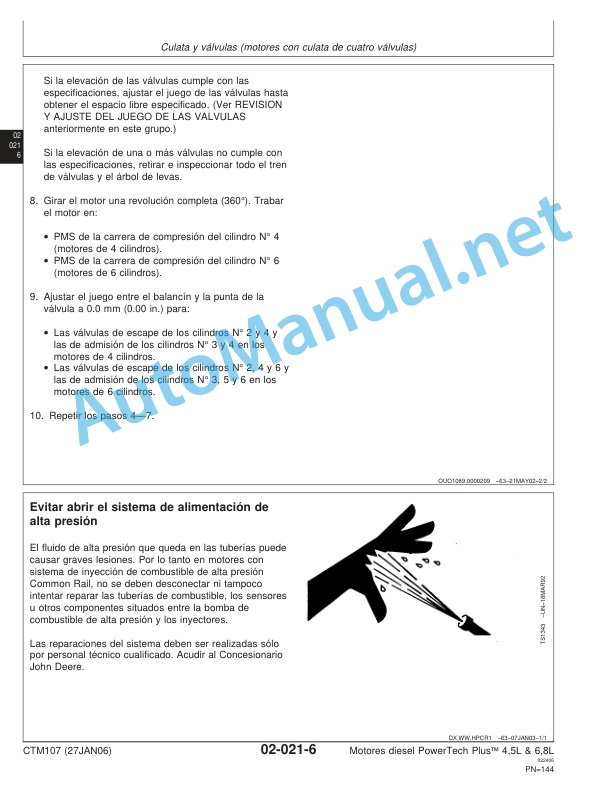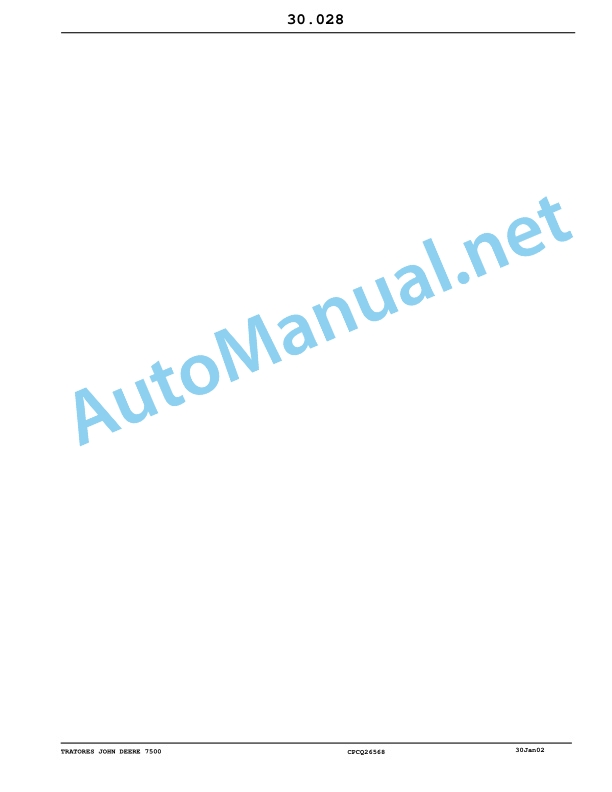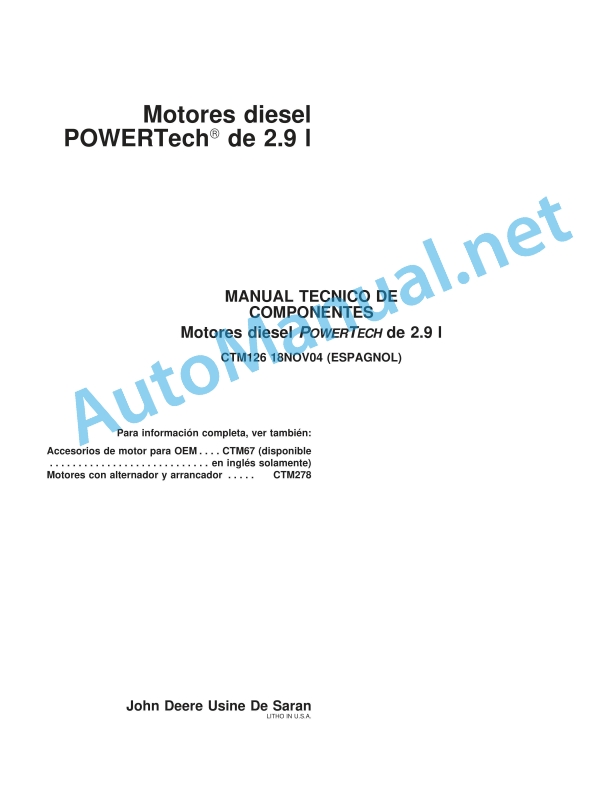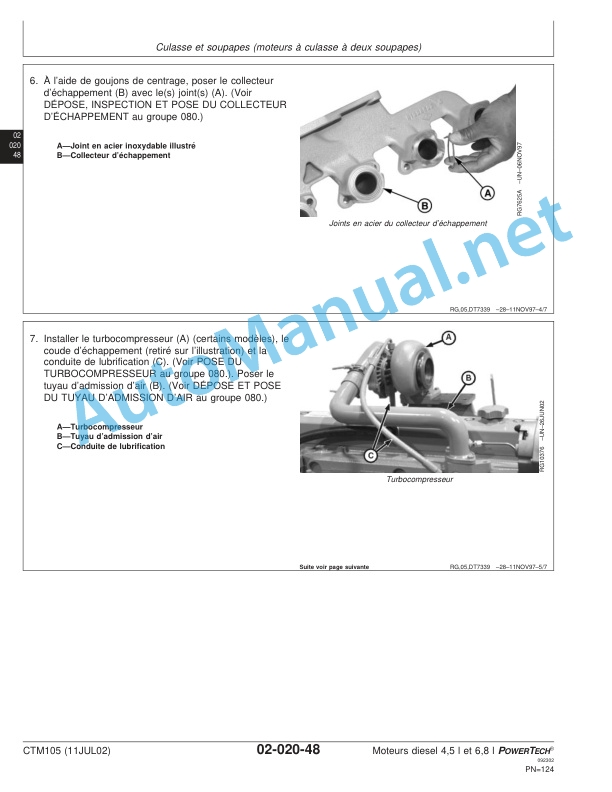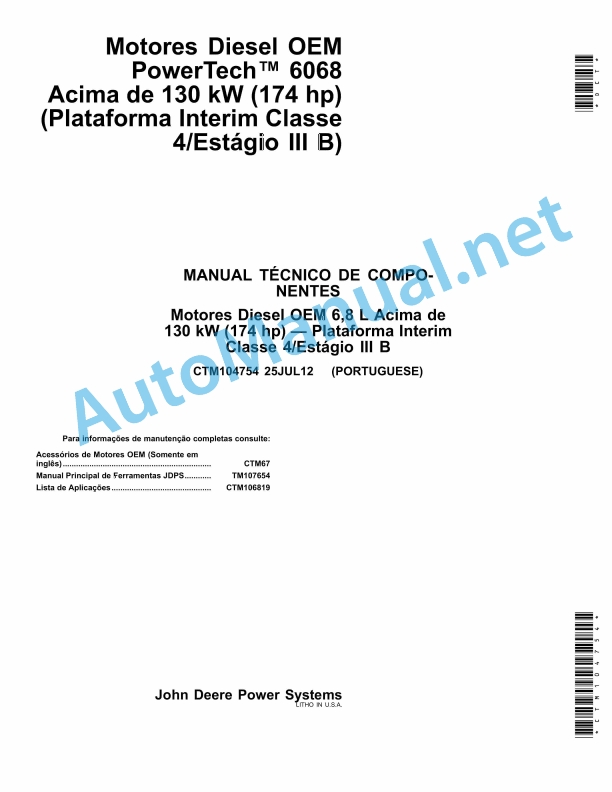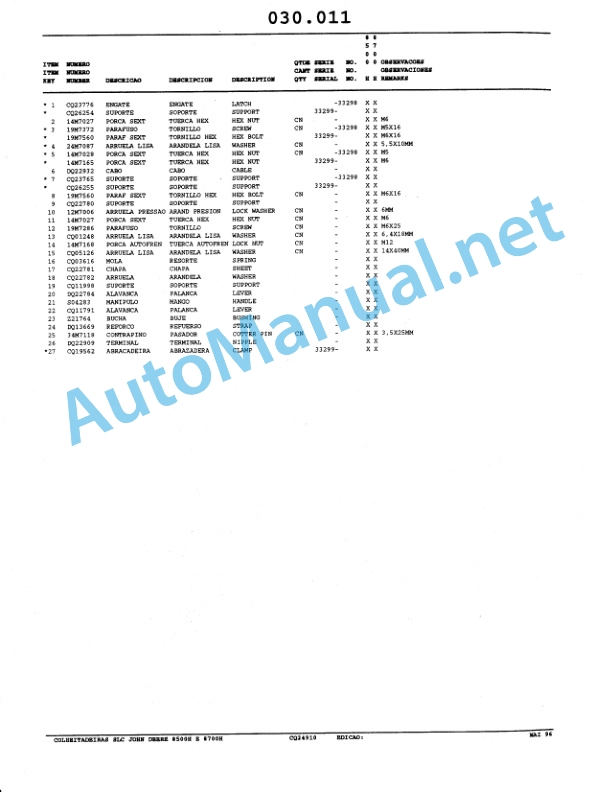Claas Rollant 540 Rc Rf (J03) Baler Operator Manual ES
$50.00
- Model: Rollant 540 Rc Rf (J03) Baler
- Type Of Manual: Operator Manual
- Language: ES
- Format: PDF(s)
- Size: 60.8 MB
File List:
00 0302 016 8.pdf
00 0302 016 8.pdf:
User manual
1. Introduction
1.1 General information
1.1.1 Application of this manual
1.1.2 Information about this instruction manual
1.1.3 Symbols and indications
1.1.4 Optional equipment
1.1.5 Qualified specialized workshop
1.1.6 Maintenance instructions
1.1.7 Information regarding warranty
1.1.8 Spare parts and technical issues
1.2 Proper application of the machine
1.2.1 Authorized use
1.2.2 Reasonably foreseeable misuse
2 Security
2.1 Recognize warning signs
2.1.1 Danger symbols
2.1.2 Keyword
2.2 Safety instructions
2.2.1 Meaning of the instruction manual
2.2.2 Observe graphic danger symbols and alarm indications
2.2.3 Requirements for all people working with the machine
2.2.4 Children in danger
2.2.5 Dangerous areas
2.2.6 Position yourself between the tractor and the machine
2.2.7 Accompanying persons
2.2.8 Couple the tractor with the machine
2.2.9 Risk of injury due to rotating shafts
2.2.10 Construction modifications
2.2.11 Optional equipment and spare parts
2.2.12 Control of the tractor in operation
2.2.13 Use only after correct start-up
2.2.14 Technical status
2.2.15 Danger due to machine breakdowns
2.2.16 Comply with technical limit values
2.2.17 Danger due to coasting parts
2.2.18 Maintain functional protection devices
2.2.19 Personal protective equipment
2.2.20 Wear appropriate clothing
2.2.21 Remove dirt and loose objects
2.2.22 Prepare the machine for road traffic
2.2.23 Dangers when driving on the road and in the countryside
2.2.24 Park the machine safely
2.2.25 Parking without supervision
2.2.26 Consumables that do not meet the requirements
2.2.27 Safe handling of consumables and auxiliary materials
2.2.28 Environmental protection and waste disposal
2.2.29 Fire protection
2.2.30 Very dangerous electrical discharge from overhead power lines
2.2.31 Electrical shock from electrical equipment
2.2.32 Liquids under pressure
2.2.33 Pressurized air
2.2.34 Hot surfaces
2.2.35 Work only on the stopped machine
2.2.36 Maintenance work and repair work
2.2.37 Machine parts and lifted loads
2.2.38 Risks derived from welding work
2.3 Graphic danger symbols
2.3.1 Structure of graphic hazard symbols
2.3.2 Location of safety stickers
3 Machine Description
3.1 Existing models
3.1.1 Designation of machines
3.2 Overview and functions
3.2.1 Left side
3.2.2 Right side
3.2.3 Roller identification
3.3 Safety equipment
3.3.1 Signal lighting
3.3.2 Reflective equipment*
3.3.3 Surety
3.3.4 Shims
3.3.5 Holding cable*
3.3.6 Parking brake*
3.3.7 Tailgate lock
3.3.8 Locking the plastic belt guide rollers*
3.3.9 Locking the pick-up
3.3.10 Fire extinguisher*
3.4 Work and service positions
3.4.1 General information
3.4.2 Front of the baler
3.5 Identification plates and identification numbers
3.5.1 Spare parts and technical information
3.5.2 Identification number or VIN code
3.5.3 Machine identification plate
Identification plate for machines with European approval
Identification plate for machines without European approval
Identification plate for the countries of the Customs Union (Belarus, Kazakhstan, Russia)
3.5.4 Rudder identification plate*
3.5.5 Axle identification plate
3.6 Machine information
3.6.1 Location of information stickers
3.7 General operating principle
3.7.1 Bale pressing cycle
3.8 Control terminal
3.8.1 CEMIS 700*
3.8.2 COMMUNICATOR*
3.8.3 OPERATOR*
3.8.4 ISOBUS connection*
3.9 Trailer support
3.9.1 Types of coupling
3.10 Transmission and drive
3.10.1 Power transmission
3.10.2 Main drive
3.10.3 Pick-up drive
3.10.4 Rotor drive*
3.10.5 Drive Chains
3.11 Harvest harvest
3.11.1 Pick-up
3.11.2 Pick-up wheels
3.11.3 Compactor*
3.11.4 Short straw plate*
3.11.5 Reduction roller*
3.11.6 Double reduction roller*
3.12 Power supply unit
3.12.1 Rotor
3.12.2 Rotor frame with folding bottom*
3.12.3 ROTO CUT* cutting device
3.13 Pressing system
3.13.1 Pressing chamber and rollers
3.13.2 MPS (Maximum Pressure System or oscillating segment)
3.13.3 Pressing cycle
3.14 Tying system
3.14.1 Tying categories and types
3.14.2 Standard tying
3.14.3 Comfort binding
3.14.4 Tying with mesh
3.14.5 Tied with plastic tape
3.14.6 Tying adjustment
3.14.7 Thread box*
3.14.8 Mesh reserve*
3.14.9 Plastic tape / mesh reserve*
3.14.10 Mesh compartment*
3.14.11 Plastic tape/mesh compartment*
3.14.12 Deflector
3.15 Unloading bales
3.15.1 Bale unloading ramp
3.16 Lubrication system (oil)
3.16.1 Automatic chain lubrication
3.17 Lubrication system (grease)
3.17.1 Manual lubrication
3.17.2 Manual centralized lubrication*
3.17.3 Electric automatic centralized lubrication*
3.18 Brake
3.18.1 General information
3.18.2 Hydraulic braking*
3.18.3 Active hydraulic braking*
3.18.4 Pneumatic braking*
3.19 Hydraulic system
3.19.1 Baler Hydraulic Block
Standard hydraulic system*
Continuous circulation comfort* hydraulic system
3.19.2 Hydraulic circuit filter
3.19.3 Continuous hydraulic circulation*
3.19.4 Load Sensing*
3.20 Equipment
3.20.1 Ladder
3.20.2 Stirrup
3.20.3 Electronic module
3.20.4 Anti-theft*
3.20.5 Working lighting*
3.20.6 Shaft shims
4 Control and display instruments
4.1 CEMIS 700
4.1.1 Presentation
4.1.2 Description of the CEMIS 700
John Deere Repair Technical Manual PDF
John Deere Parts Catalog PDF
John Deere Tractors 7500 Parts Catalog CPCQ26568 30 Jan 02 Portuguese
John Deere Repair Technical Manual PDF
John Deere Diesel Engines POWERTECH 2.9 L Component Technical Manual CTM126 Spanish
John Deere Repair Technical Manual PDF
John Deere Repair Technical Manual PDF
John Deere 18-Speed PST Repair Manual Component Technical Manual CTM168 10DEC07
John Deere Repair Technical Manual PDF
John Deere DF Series 150 and 250 Transmissions (ANALOG) Component Technical Manual CTM147 05JUN98
John Deere Repair Technical Manual PDF
John Deere 16, 18, 20 and 24HP Onan Engines Component Technical Manual CTM2 (19APR90)
John Deere Repair Technical Manual PDF
John Deere Parts Catalog PDF
John Deere Harvesters 8500 and 8700 Parts Catalog CPCQ24910 Spanish




